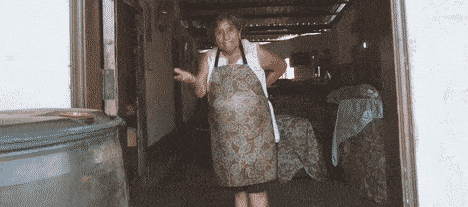
The Empathy Challenge: Teach Empathy In A Captivating Way
A learning guide for all of us to teach empathy in an organic, non-prescriptive way. Let’s build our empathy and understanding muscles early in life, every day, and everywhere.
Let’s practice curiosity before judgment with this lifelong lesson plan. Lifelong wonder leads to lifelong learning.
Early childhood educator? Try this version!
Engaging on your own? Try this version!
PDF Version
Bridging The Empathy Gap & Practicing Curiosity Before Judgment: Teaching Empathy
This BetterWorldEd.org learning guide is for any group of humans to engage in together on the journey to teach empathy.
Explore the Humanity Unit and Teaching Unit to prepare to discuss important concepts like how to teach empathy, difference, bias, and more.
For lasting impact, spread this lesson across multiple sessions with time to reflect and/or repeat often with new Learning Journeys. Building empathy is a lifelong practice. Let’s love it together.
Bookmark for another time: Try a fun lesson on writing our learning journey or this lesson for making math more human, mindful, and meaningful!
1) ASK A COMPLEX CONVERSATION STARTER & ENCOURAGE CURIOSITY BEFORE JUDGMENT:
“Think about everyone here in our group. Do we understand everything about each person’s life? Might we have assumptions about others? Do we know what it’s like to step into each person’s mind and heart?”
Share an experience that YOU have had where empathy was lacking – a time when there was a misunderstanding of who you were or who someone else was. Ask the group if anyone has ever experienced something like this. “How could we have better understood each other in that situation?”
The group might respond with something like, “We can’t know everything about others,” or, “It starts by asking questions”. Look out for (or guide the conversation towards) steps that we can practice in our day to day lives. Write responses down or have a member of the group write them down.
At this point, you can either play a video from the Humanity Unit focused on empathy building, or continue through discussion: Remind everyone that, like anything, empathy building is about practice. “Today we can come up with ways to use these actions in our own lives — and encourage people around us to do the same! We can ask ourselves, “What can I do more effectively next time I’m in a situation like this?””
2) RECOGNIZE WONDER, BIAS & ASSUMPTIONS:
Introduce ANY Learning Journey Video. Make sure to watch this video beforehand to select a moment to pause (ex. before a scene change revealing a new part of the person’s life).
BEFORE WATCHING, ask the group a question: “What thoughts and feelings come to mind and heart when we think of a(n) ____ in ____? And what do we WONDER?” (Insert the role in society this person plays, and the country this person is in. For example, “Chai Wala” (Chai Seller) in India or Banana Grower in Ecuador.)
Create four columns or quadrants on your board. Write the words group members share on the left section of your board. Write the WONDERINGS as questions next to the words that come to people’s minds. NOW START THE VIDEO. PAUSE at your pre-selected moment. Have the group write notes based on what has been viewed so far: what we NOTICE, WONDER, ASSUME/GUESS, and BELIEVE about our new friend.
Pose questions like: “What do we believe about _____? What do we think of ___’s community? What do you think ___’s life is like, given what you’ve seen in the video so far? What other assumptions or feelings come to you as you reflect?” Fill these responses in on the middle of your board.
3) GROWING PAST OUR ASSUMPTIONS:
Play the rest of the video. Have your group split into smaller groups or partner up with someone the person doesn’t usually partner with for activities.
In groups, discuss and write out what changed about beliefs by the end of the video (as we gained more chance for understanding).
Remind everyone about some of the principles of the activity. “As groups discuss, we’re striving to practice curiosity and empathy. As we do, it matters that we are patient with one another. Let’s make this a space to trust one another and share openly – to suspend our judgment beyond the surface of what we see. Let’s remember the human experience is complex and unique for all of us, and let’s see beyond the tip of the iceberg to understand each other more deeply.”
After a few minutes, have the group come back together. Ask if there are any volunteers willing to share what was learned during discussions. Ask if any group would like to write (on the next section) what their group now believes about ___ after watching.
Now begin to read one of ____’s written stories that helps to dive even deeper into _____’s life. Ask the group how everyone’s perspectives have shifted now that they’re learning even more beyond what we saw in the video. Use the fourth section on the board to write these responses. (Remember: our new friend’s video will have 2-4 different written stories that are searchable on the betterworlded.org/stories page. You can choose one (or all) that seems to fit best for your discussion!)
4) Pose an EMPATHY CHALLENGE (CURIOSITY BEFORE JUDGMENT):
“How often do we assume things about others before learning one’s story?”
“Why is this often our “default” reaction? Might we be assuming things about others in our own class/group or school/learning community? In our homes? As we walk down the street? As we get on a bus?”
“What can we do together to assume less and be curious more? To choose CURIOSITY BEFORE JUDGMENT? To strive to notice and wonder? To recognize where we may have a bias or judgment, and to start to question why?”
“To start to wonder where these biases and judgments even come from at all? What practices can we engage in individually, and together as a group?”
Share an example of how you will incorporate empathy into your life starting today (Example: “I will strive to talk to ____ on the way home and wonder and learn about ___’s life. In the past, I haven’t ever asked or acted on my wonder!”). Share how the group can hold you accountable for doing so. Now ask the group to share in this with you by writing ways they will suspend judgment and engage in a new Learning Journey! (You may find it helpful to reference the “why are the videos wordless?” section here, either as a preparation tool or to share with your group as you discuss the power of seeking understanding beyond what we initially see and think.)
KEEP THE LEARNING JOURNEY GOING:
Reflect and write some ideas on how to incorporate empathy into the daily practice of our classroom, of our various classes, and in our entire lives. How can we better identify when empathy is lacking and help the people around us grow to be more empathetic people? How can we exhibit this value in everything we do? Encourage the group to explore the Humanity Unit to dig in deeper, or use this unit as a foundational resource in future discussions around these themes.
DIRECT ACTION IDEA: Creating direct ways to embed empathy into other classes at school
Groups of 4-5, half of the class, or the entire class can develop lesson ideas for teachers in other classes to show how empathy relates to math, science, history, language, and more. The groups can each develop ways to help teachers see how they can teach about stories that really matter while also continuing to teach their academic topics. For some extra fun, group members can submit creations and key learnings to the Better World Ed team or through your members hub (if you are an existing member). If you’re not a member, today’s the perfect day to get started on this lifelong learning journey together!
Reflecting Together On How To Teach Empathy Every Day & Everywhere
We all know deep down that teaching empathy isn’t a one time thing. Every time we teach empathy, we have to practice it in our own lives as well. The empathy challenge is one to help us teach empathy in a meaningful, holistic, and deep way. To help us learn empathy organically.
If teaching empathy is your priority, why not bring that teaching to life with stories that inspire and encourage empathy across all lines of difference? Across all borders?
That’s what Better World Ed Learning Journeys are all about. Helping us love learning about self, others, and our world. Helping us learn to love self, others, and our world. Learning compassion. Learning to be mindful leaders reweaving a peaceful, equitable, and just world.
Together, we can make this world reality. That peaceful and equitable world we dream of is within all of us right here and right now.
Learning Journeys are academic and research-backed. Wordless videos that encourage curiosity and empathy for self, others, and Earth. Written stories that make math and literacy real-world and relevant. Lesson plans that make learning inter-disciplinary and full of wonder. Social Emotional Learning with awe-inspiring depth.
Learning Journeys weave together critical skills: math, literacy, empathy, social awareness, curiosity, communication, collaboration, creativity, self-awareness, mindfulness, perspective taking, recognizing and addressing bias, peace-building, and compassion. All in a real-world, standards aligned way.

We believe captivating content is for every classroom. That’s why we work with amazing storytellers and educators to design every Learning Journey.
It’s also why our videos don’t have words: no prescribed narrative, no language barrier! Social Emotional Learning that helps you(th) prioritize curiosity and understanding over judgment and bias.
We believe in creating alongside educators and students. From the start, we have seen educators and students as true partners on this journey to open hearts and minds.
This is how we’ve designed Learning Journeys to be adaptive across learning environments, in school and at home. To be effective early in life, every day, and anywhere you(th) are learning. Browse empathy encouraging stories below!

